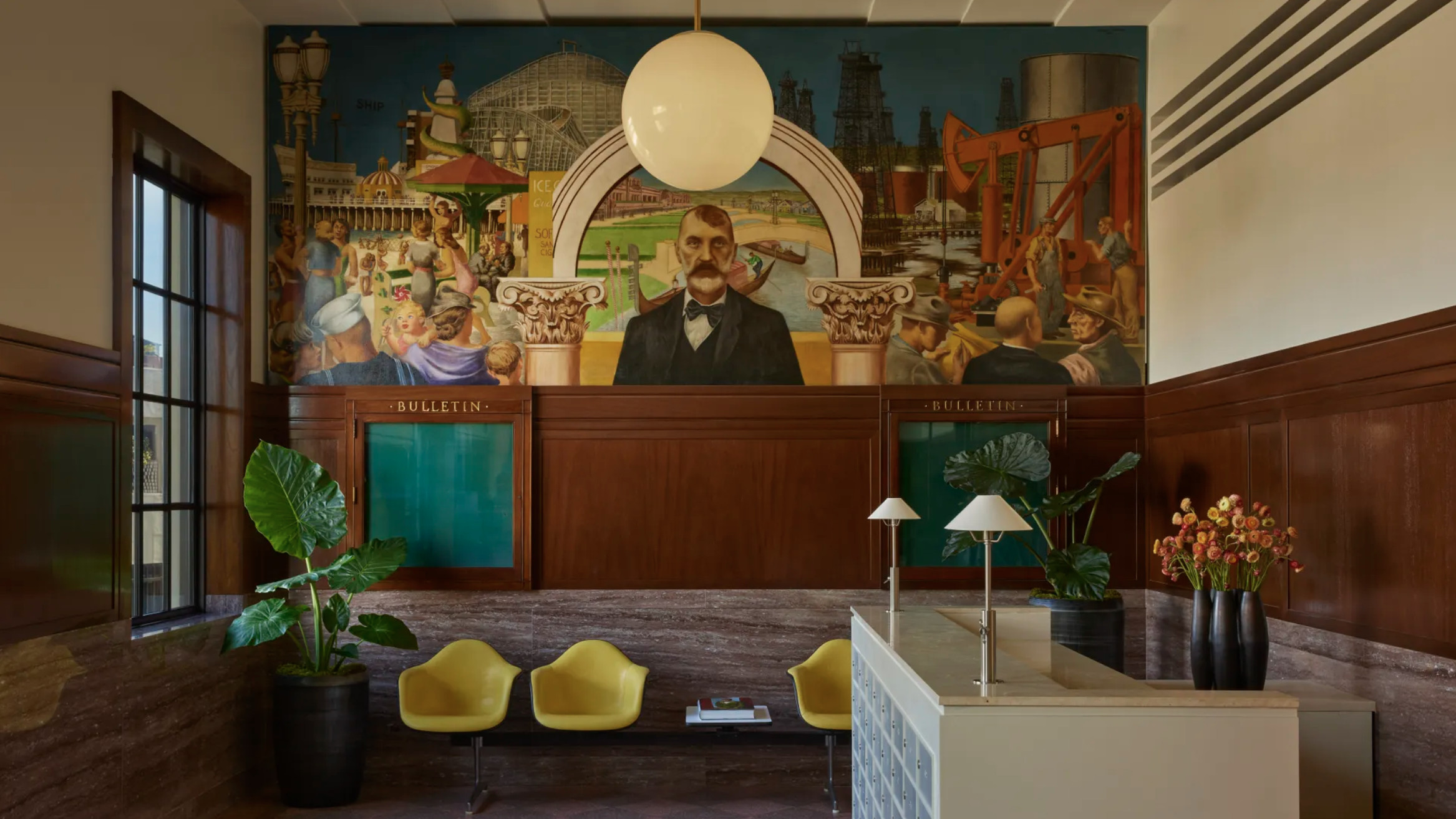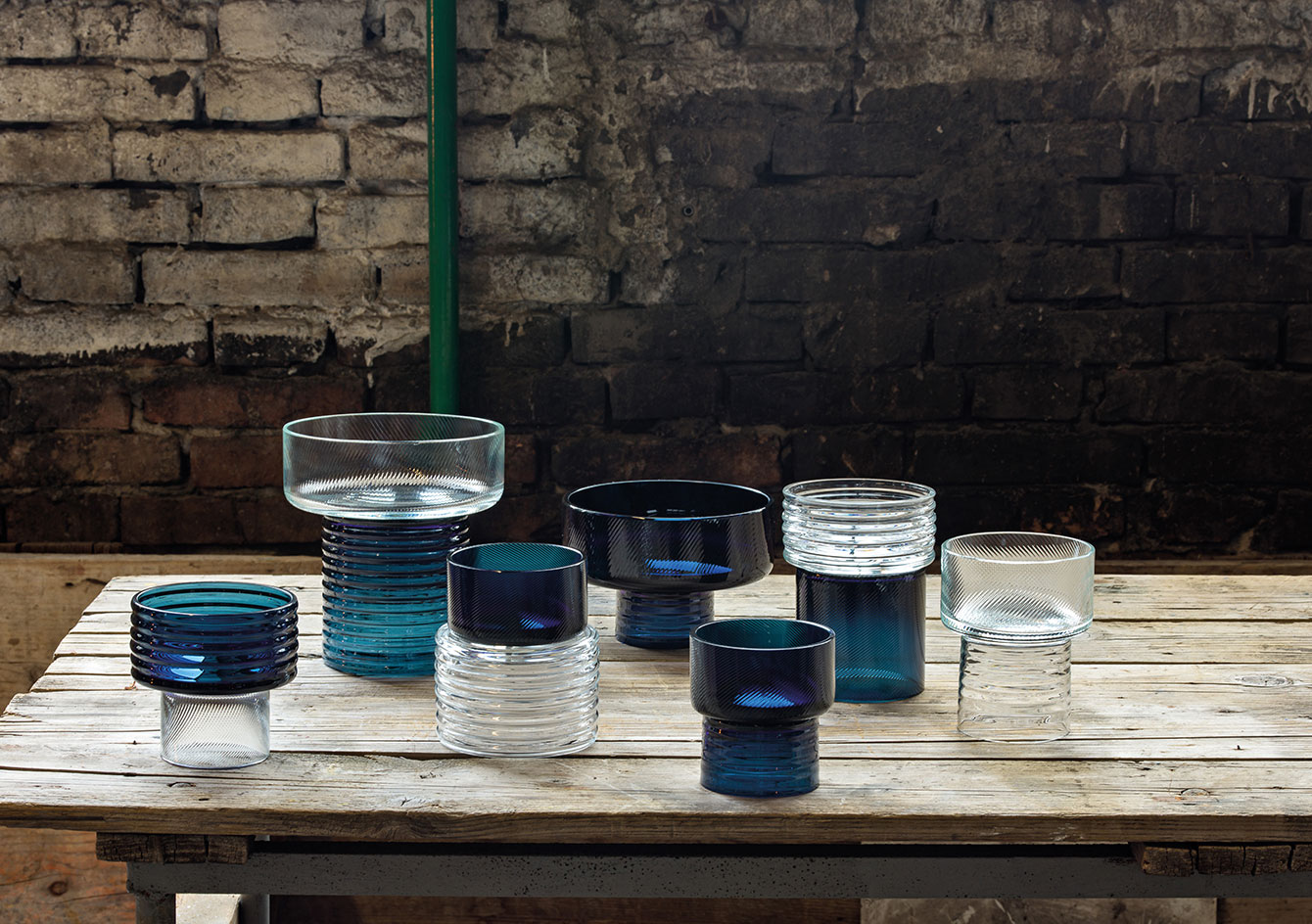Lock stock: the making of Karl Zahn and The Nanz Company’s Hotel Wallpaper* keys

The hotel key card may be a signifier of modern advancement and convenience, but we can’t help longing for the old-world charm that some grand European hotels still uphold: a good old-fashioned key. This was the starting point behind our ideal room key – a design opportunity waiting to be seized.
New York-based designer Karl Zahn was our collaborator of choice, known for the imaginative and characterful spin he brings to both functional and decorative objects. Zahn regularly uses natural materials and zoomorphic tropes. A collection of beech storage boxes he designed for Areaware in 2012 took the form of a menagerie of animals and continues to delight.
‘One of the things I noticed after hearing the responses of people who use the boxes is that the product has become more than just a sculpture or a box. Simply by making it into the shape of an animal, and putting eyes and legs on a piece, you start to build a relationship with the user,’ reflects Zahn.
He instantly gravitated to the idea of creating naïve animal shapes for our room keys. ‘In the case of a hotel key, something that someone would need to take care of and not lose, this relationship comes in handy.’
He envisions his designs being held by the hotel’s front desk, and handed to guests only should their own keys be misplaced. ‘When you’ve locked yourself out and you’re only wearing a towel, the hotel desk key is there to save you. But it only works if you return the key for the next person.’ He adds, ‘Part of making people relate to something is that you run the risk of a person taking it. I wanted to address the need for group cooperation to maintain the desk key collection – a way that wasn’t a financial hit or a long anchor chain – thus the use of the herd [idea]. Hopefully that would be enough of a deterrent to would-be thieves. You’d be stealing a mother or father or child away from its family....’
Animal choices were swiftly whittled down to two forms, a gazelle and an alligator, which were relatively straightforward to realise, and articulated a circle of life in the African wild. ‘We chose [them] because they were natural enemies and [envisioned them displayed] in a prey/predator attack scene,’ says Carl Sorenson, co-founder of hardware manufacturer The Nanz Company, which undertook the production of the keys.
Zahn adds, ‘The jagged edge of key teeth lent itself to [the gazelle’s] serrated horn and the alligator teeth.’ Keen to rely on the traditional methods of making simple, sheet-metal keys, Zahn worked with Nanz to fine-tune production. The gazelles have two halves, so they are able to stand, while the alligator features a corrugated back. With the full force of Nanz’s 50,000 sq ft factory in Long Island City, New York, behind the project, any challenges were overcome. ‘We created manufacturing drawings, designed the tooling, fabricated the parts, finished and assembled the animals in less than two weeks,’ says Sorenson. ‘The project employed waterjet technology and a hydraulic 20-ton press.’
Wallpaper* Newsletter
Receive our daily digest of inspiration, escapism and design stories from around the world direct to your inbox.
Although the examples in this issue demonstrate creative licence for the purposes of the Handmade exhibition (‘We oversized them for effect,’ says Sorenson), the keys are fully functional. ‘They [just] need to be cut for a specific lock,’ says Zahn.
As originally featured in the August 2016 issue of Wallpaper* (W*209)

See more from Handmade here and check in to Hotel Wallpaper*…

New York-based designer Karl Zahn and The Nanz Company have collaborated on the creation of our ideal Hotel Wallpaper* keys. Left: a gazelle, amid metal trimmings, before its horn is cut to form a key. Right: Karl Zahn at The Nanz Company’s factory.

Zahn envisioned his designs being held by the hotel’s front desk, and handed to guests only should their own keys be misplaced. Pictured left: work proceeds at The Nanz Company’s Long Island factory. Right: workers in the shell-casting foundry pour the 2,100-degree molten bronze used to form the keys.

‘The project employed waterjet technology and a hydraulic 20-ton press,’ explains The Nanz Company’s Carl Sorenson.
INFORMATION
For more information, visit Karl Zahn’s website and The Nanz Company’s website
Pei-Ru Keh is a former US Editor at Wallpaper*. Born and raised in Singapore, she has been a New Yorker since 2013. Pei-Ru held various titles at Wallpaper* between 2007 and 2023. She reports on design, tech, art, architecture, fashion, beauty and lifestyle happenings in the United States, both in print and digitally. Pei-Ru took a key role in championing diversity and representation within Wallpaper's content pillars, actively seeking out stories that reflect a wide range of perspectives. She lives in Brooklyn with her husband and two children, and is currently learning how to drive.
-
 The Lighthouse draws on Bauhaus principles to create a new-era workspace campus
The Lighthouse draws on Bauhaus principles to create a new-era workspace campusThe Lighthouse, a Los Angeles office space by Warkentin Associates, brings together Bauhaus, brutalism and contemporary workspace design trends
By Ellie Stathaki
-
 Extreme Cashmere reimagines retail with its new Amsterdam store: ‘You want to take your shoes off and stay’
Extreme Cashmere reimagines retail with its new Amsterdam store: ‘You want to take your shoes off and stay’Wallpaper* takes a tour of Extreme Cashmere’s new Amsterdam store, a space which reflects the label’s famed hospitality and unconventional approach to knitwear
By Jack Moss
-
 Titanium watches are strong, light and enduring: here are some of the best
Titanium watches are strong, light and enduring: here are some of the bestBrands including Bremont, Christopher Ward and Grand Seiko are exploring the possibilities of titanium watches
By Chris Hall
-
 Runway project: the making of Alfredo Häberli and Cerruti 1881's jumpsuit
Runway project: the making of Alfredo Häberli and Cerruti 1881's jumpsuitBy Rosa Bertoli
-
 Hole in one: the making of Studio JinSik Kim, Cuellar, Bolon and Anun's ‘One Point’ minigolf
Hole in one: the making of Studio JinSik Kim, Cuellar, Bolon and Anun's ‘One Point’ minigolfBy Ali Morris
-
 Servant class: the making of David Chipperfield Architects, E15 and AHEC’s ‘Butler’ stand
Servant class: the making of David Chipperfield Architects, E15 and AHEC’s ‘Butler’ standBy Jonathan Bell
-
 Curve appeal: the making of Wonmin Park and Testi’s Hotel Wallpaper* reception desk
Curve appeal: the making of Wonmin Park and Testi’s Hotel Wallpaper* reception deskBy Paul McCann
-
 Clean lines: the making of Pelle and ER Butler & Co's ‘Rock Garden’ soap set and tray
Clean lines: the making of Pelle and ER Butler & Co's ‘Rock Garden’ soap set and trayBy Pei-Ru Keh
-
 Frame work: the making of KBH and Dedar’s sofa
Frame work: the making of KBH and Dedar’s sofaBy Ellie Stathaki
-
 Gear shift: the making of Victoria Wilmotte and Maison Vervloet’s ’Edgar’ bell
Gear shift: the making of Victoria Wilmotte and Maison Vervloet’s ’Edgar’ bellBy Paul McCann
-
 Strike force: the making of Will Yates-Johnson and NasonMoretti’s matches vessels
Strike force: the making of Will Yates-Johnson and NasonMoretti’s matches vesselsBy Paul McCann